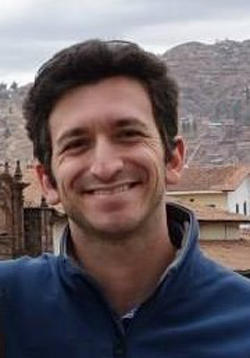
Aaron Kerlin, Ph.D.
E-MAIL: [email protected]
Research Interests:
As we learn a new skill, how does our brain change to store information about the actions involved? Cortical neurons receive information from the thousands of synaptic inputs onto the dendritic tree. Leaning occurs when the efficacy of these inputs change in response to patterns of activity. Within the dendrite, location-dependent learning rules and interactions between inputs sculpt these changes.
The Kerlin Lab uses advanced two-photon microscopy techniques to understand how dendritic compartments and individual synapses within the motor cortex are modified as mice learn to perform new tasks. Recent work has identified a distinct loop between cortex and thalamus that maintains motor plans in the absence of overt action. By tracking and manipulating dendritic activity while monitoring the kinematics of action, we are determining the critical subcellular loci for the learning of new motor plans. Clarifying the biophysical events that drive normal plasticity will help us identify ways to shift cortical plasticity into regimes that favor the improvement of cognitive motor disorders or rehabilitation after damage to motor systems.
Our lab website is http://www.kerlinlab.org
Selected Publications:
- Kerlin A, Mohar B, Flickinger D, MacLennan BJ, Dean MB, Davis C, Spruston N, Svoboda K. Functional clustering of dendritic activity during decision-making. Elife. 2019 Oct 30;8:e46966.
- Dana H, Sun Y, Mohar B, Hulse BK, Kerlin AM, Hasseman JP, Tsegaye G, Tsang A, Wong A, Patel R, Macklin JJ, Chen Y, Konnerth A, Jayaraman V, Looger LL, Schreiter ER, Svoboda K, Kim DS. High-performance calcium sensors for imaging activity in neuronal populations and microcompartments. Nat Methods. 2019 Jul;16(7):649-657.
- Lu R, Sum W, Liang Y, Kerlin A, Bierfeld J, Seelig J, Wilson D, Scholl B, Mohar B, Tanimoto M, Koyama M, Fitzpatrick D, Orger M, Na J. Video-rate volumetric functional imaging of the brain at synaptic resolution. Nat Neurosci. 2017;20:620-628.
- Liu R, Milkie DE, Kerlin A, MacLennan B, Ji N. Direct phase measurement in zonal wavefront reconstruction using multidither coherent optical adaptive technique. Optics Express. 2014;22:1619-1628.
- Goldey GJ, Roumis DK, Glickfeld LL, Kerlin AM, Reid RC, Bonin V, Schafter DP, Andermann ML. Removable cranial windows for long-term imaging in awake mice. Nat Protoc. 2014;9(11):2515-2538.
- Wang C, Liu R, Milkie DE, Sun W, Tan Z, Kerlin A, Chen TW, Kim DS, Ji N. Multiplexed aberration measurement for deep tissue imaging in vivo. Nat Methods. 2014;11(10):1037-40.
- Andermann ML, Kerlin AM, Roumis DK, Glickfeld LL, Reid RC. Functional specialization of mouse higher visual cortical areas. Neuron. 2011;72:1025-1039.
- Bock DD, Allen Lee WC, Kerlin AM, Andermann ML, Hood G, Wetzel AW, Yurgenson S, Soucy ER, Kim HS, Reid RC. Network anatomy and in vivo physiology of a group of visual cortical neurons. Nature. 2011;471:177-182.
- Kerlin AM, Andermann ML, Berezovskii VK, Reid RC. Broadly tuned response properties of diverse inhibitory neuron subtypes in mouse visual cortex. Neuron. 2010;67:858-71.
Current Graduate Students:
Jacob Gable (Neuroscience, University of Minnesota)
